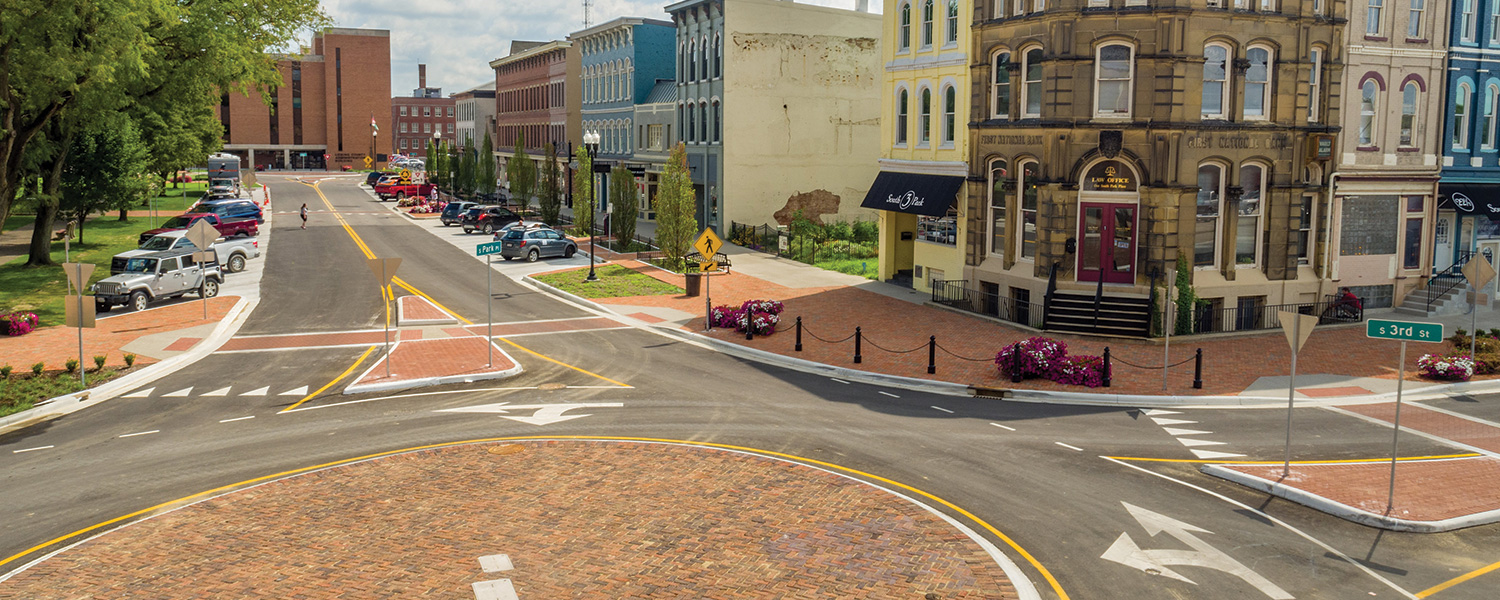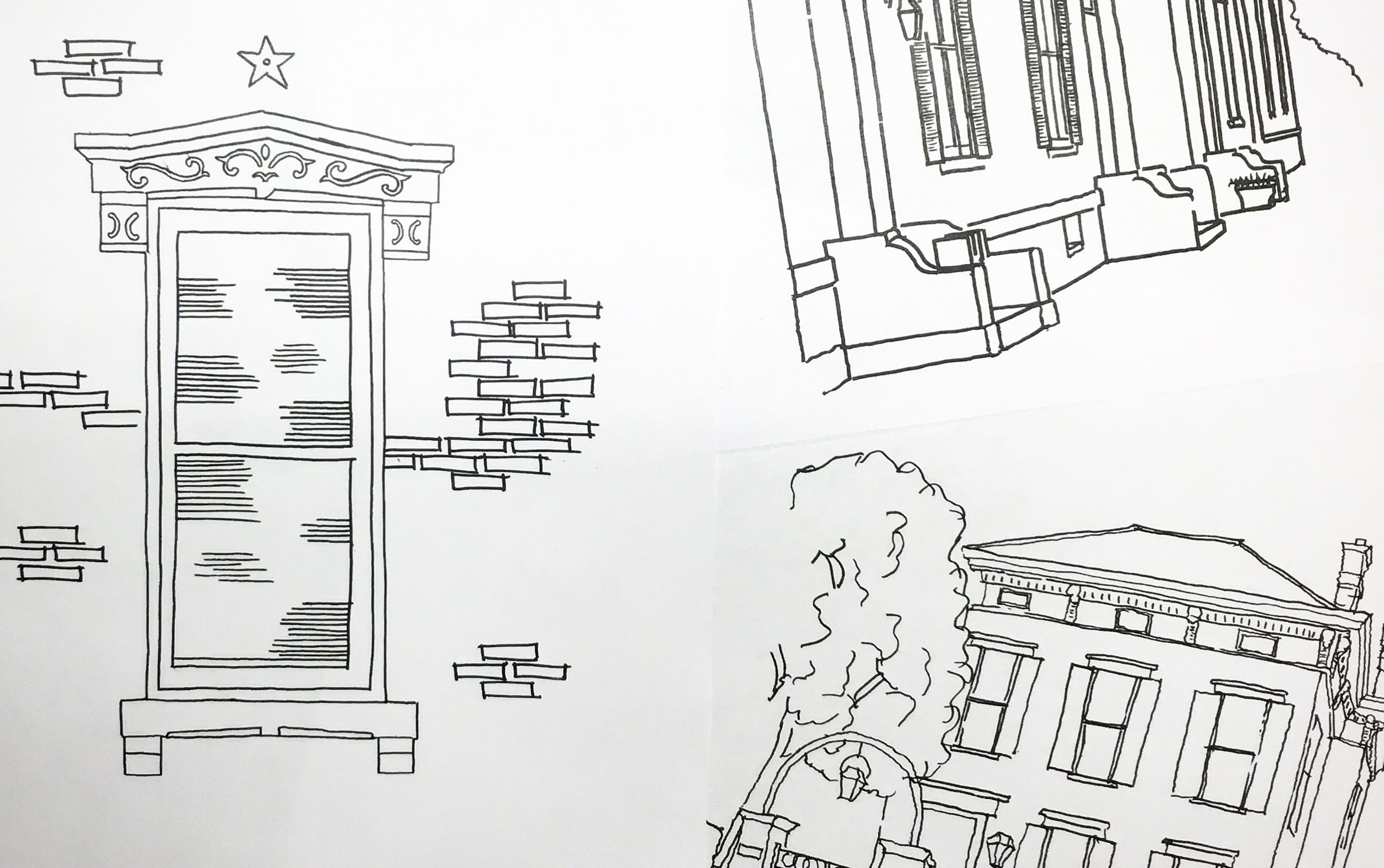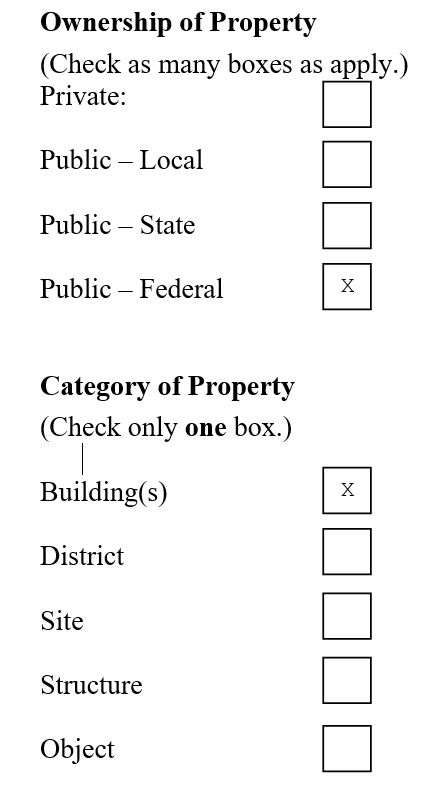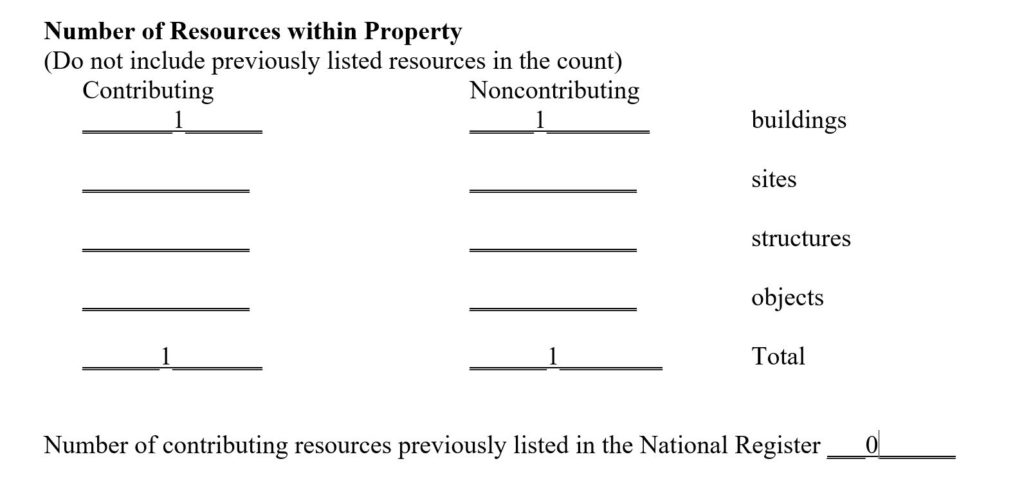Federal Qualified Opportunity Zones Webinar
Wednesday, February 6th – 1:00 pm-2:00 pm
As part of 2017 federal tax reform, Congress created new tax benefits for certain investments in low-income communities designated as Qualified Opportunity Zones. During 2018 Ohio designated 320 Opportunity Zones, the maximum allowed.
This webinar will provide an overview of the technical aspects of the program. Suggested strategies will be offered for using the QOZ program in mid-western cities and how you can combine QOZ investments with other economic incentives.
Speakers:
Kelly Bissinger
Kelly is a partner in the Vorys Washington, D.C. office and a member of the finance, energy and real estate group. Her practice is focused on real estate and tax matters. Kelly represents clients from all perspectives of the acquisition, financing, ownership, development and sale of office buildings, apartment projects, mixed-use and other commercial properties. In particular, she has experience representing both institutional and developer clients in connection with structuring and negotiating real estate joint ventures with an emphasis on the tax planning aspects of such transactions.
In addition, Kelly has extensive experience advising developers, syndicators and investors on low-income housing, historic, new market and energy tax credits matters, including legislative and regulatory developments, originations, secondary market acquisitions and dispositions, end of compliance period planning and workouts.In 2013, Kelly was named one of Real Estate Bisnow’s (D.C.) 35 Under 35: Rising Stars in Commercial Real Estate. Kelly received her LL.M. with distinction in taxation and her J.D. from Georgetown University Law Center. She received her B.A. cum laude from Tulane University. Prior to joining Vorys, Kelly was an attorney with Goulston & Storrs P.C. and Squire Patton Boggs (US) LLP.
 Avram Fecher
Avram Fecher
Before co-founding EquityPlus, Mr. Fechter worked for the District Government underwriting and closing over $400 million in LIHTC and NMTC financed projects while deploying $3 million of 9% LIHTC Allocation and $80 million of District Government loans. Mr. Fechter has closed over $800 million in NMTC/HTC/LIHTC financing and has served as an NMTC Allocation Application reader for the CDFI Fund. Mr. Fechter has a Masters Degree in Public Policy from Rutgers University. He lives in Aldie, Virginia with his wife, Linnea, and two children, Alana and Evan.
 Joseph Mann
Joseph Mann
Joseph is a partner in the Vorys Columbus office, a member of the tax group and the head of the federal tax subgroup. He practices generally in the area of federal taxation, including public and private mergers, tax-free and taxable acquisitions and divestitures, partnerships, limited liability companies, S corporations, joint ventures, venture capital, real estate, restructurings, financing and equity transactions. Joseph advises in transactions involving federal New Markets Tax Credits and Historic Tax Credits. Joseph’s federal practice also includes tax aspects of the oil and gas industry, including divestitures and joint ventures relating to interests in the Utica Shale formation in eastern Ohio.
This webinar is a benefit of Heritage Ohio membership, to become a member click HERE
Heritage Ohio Members, register for the webinar click HERE
![]()
National Register of Historic Places Registration Form – Question 8b.
For the SUMMARY PARAGRAPH, we have to identified the following items:
- Specific associations or characteristics through which the property has acquired significance, including historic events, activities, persons, physical features, artistic qualities, architectural styles, and archeological evidence that represent the historic contexts within which the property is important to the history of the local community, the State, or the nation.
- Specific ways the property meets the qualifying criterion and has contributed to each area of significance entered on the form.
- Role of any important persons or cultural affiliations entered on the form.
- Ways the property meets the special standards for any criteria considerations marked on the form.
Statement of Significance Summary Paragraph (Provide a summary paragraph that includes level of significance, applicable criteria, justification for the period of significance, and any applicable criteria considerations.)
This Ohio Post Office is of exceptional historic significance and meets National Register criteria A and B. The building itself, the architects and builders used, as well as the mural inside, were sponsored by the Federal government during 1940’s as a part of the Depression-era New Deal Programs. This property is significant under Criterion A for it’s historic association with the Federal government’s New Deal program as a whole but specifically to bring original works of art to the public and to provide relief to artists. In the same vein, the construction work itself was specifically designed to generate work for African American builders and architects. The Post Office is significant under Criterion B for it’s historic association with the African American Architects Samuel Plato and William Wilson Cooke.
______________________________________________________________________________
Using Utility Project Funding to Improve More Than the Just the Pipes Webinar
Wednesday, January 9th – 1:00 pm – 2:00 pm
How the City of Newark leveraged a sewer separation project to revitalize their downtown. Faced with US EPA mandates to separate its combined sewer system and wanting to improve the look and feel of the historic Downtown square, the City of Newark was able to put together financing to not only improve failing infrastructure but revitalize the square as well.
 Speaker: Roger Loomis
Speaker: Roger Loomis
Water Administrator City of Newark, Division of Water and Wastewater
Total of 41 years of experience at various water and wastewater facilities working in all facets of the water and wastewater utility business. B.S. Business Administration, Human Resources from The Ohio State University, A.A.S. Turfgrass Management from Agricultural Technical Institute of Wooster, Class III Water Supply Certification, and Class IV Wastewater Treatment Certification.
This webinar is a benefit of Heritage Ohio membership, to become a member click HERE
Heritage Ohio Members, register for the webinar click HERE
![]()
YOP: Collaborative Coloring Book
Saturday, January 26, 2019 at 1 PM – 4 PM
Join us to create a collaborative coloring book! We need your help to draw images of historic places in Ohio, that have been revitalized thanks to historic tax credits. No need to worry about your artistic skill level, because we will have tracing paper and printed images of buildings. Trace a building and add your own artistic flare.
Make sure to sign your drawing, because all of our illustrators will receive recognition in the coloring book.
This will be a fun opportunity for you to learn a bit about historic tax credits, learn cool new uses for old buildings, and flex your artistic muscles.
We will be at the Main Branch Columbus Metropolitan Library (96 S Grant Ave, Columbus, OH 43215) in meeting room 3A.
People of all ages are welcome to participate in YOP activities.
For more information about YOP and updates on this event check out their Facebook page
2019 Quarterly Revitalization Series: Organization
Join Heritage Ohio in Mount Vernon on February 13th for the 1st Revitalization Series Workshop of 2019. The focus of this workshop will be on organization. For those new to leadership roles, we will have an overview of Robert’s Rules of Order. We will then be exploring many critical topic to the success of your organization including choosing the right leaders, the executive director relationship with the board, and the relationship between community, identity, and fundraising. Personal development is a critical component of being a successful leader and we will be rounding out the workshop by exploring personality types and the emotional quotient to gain a better understanding of your own strengths and those you work with. Light breakfast from the North Main Café will be provided and as always, you will have the opportunity to explore this Main Street community and grab a bite to eat as a local establishment.
![]()
National Register of Historic Places Registration Form – Question 7
The Architectural description was tricky because none of the given subcategories described the property’s style. There are National Register instructions for this eventuality, which we have followed.
If none of the subcategories describes the property’s style or stylistic influence, enter:
1.the category relating to the general period of time, and
2.if possible, enter in the next blank “other:” and the term (not exceeding 28 characters) commonly used to describe the style or stylistic influence.
7. Description
Architectural Classification
(Enter categories from instructions.)
_Modern Movement ____
_other: Neo Classical____
___________________
Materials: (enter categories from instructions.)
Principal exterior materials of the property: _____
foundation: brick
walls: brick
roof: other – tar and gravel
Narrative Description
(Describe the historic and current physical appearance and condition of the property. Describe contributing and noncontributing resources if applicable. Begin with a summary paragraph that briefly describes the general characteristics of the property, such as its location, type, style, method of construction, setting, size, and significant features. Indicate whether the property has historic integrity.)
_____________________________________________________________________________
Summary Paragraph
The Post Office, built in 1940, is located in the Central Business District of Coldwater, Mercer County, Ohio. There are no other properties located in the village of Coldwater that are listed on the National Register. There is no Historic District.
Coldwater Post Office building layout is a single story with basement, Pre-World War II postal construction. This building and its site have been well maintained. The exterior condition is good. It is constructed of yellow brick masonry, with a brick foundation, wooden trim windows, metal storm windows and a built up tar and gravel roof. The basic interior finish consists of hardwood floors, painted plaster walls with wooden trim and painted plaster ceilings with dropped egg-crate fluorescent light fixtures. Lobby and restroom floors are finished with a combination of marble, terrazzo and tile. The lobby area wainscoting is marble and the workroom has painted tongue and groove wood wainscoting. The workroom floor is hardwood.
______________________________________________________________________________
Narrative Description
The Coldwater Post Office has a built-up tar and gravel roof with a parapet. There is a narrow, plain stone cornice with a deep frieze / entablature. It has United States Post Office, Coldwater, Ohio carved into the stone and picked out with gilt. The zip code: 45828, in raised numerals, was added at a later date.
The metal and glass panel, double door entrance is surmounted by a large gilt eagle sculpture, symbolic of the USPS. It forms the centrepiece of a large wrought iron transom.
On either side of the entrance there are two windows, making four in total. These windows are made up of 3 glass panes with horizontal metal muntin bars. The windows and doors are original in form but have been replaced. The windows have deep sills that match the stone used for the frieze.
There are six Granite steps which lead up to the entrance, these are flanked on either side by two pedestals of equal height that support cast iron lamp posts (which have been replaced). The bronze iron handrails for the steps are original.
There is a foundation / cornerstone laid in the lower right hand (North West) corner of the brick facade.
The Building’s layout is a single story with basement Pre-World War II postal construction.
This structure and its site have been well maintained. The exterior building condition is good.
The post office is constructed of a stone base, yellow brick masonry with stone trim and stone cornice. There is brick foundation and concrete floor slabs in the basement. The wooden trim windows are protected by metal storm windows.
An item of particular artistic value is a mural located in the lobby above the Postmaster’s door. The mural depicts mail being delivered by doves to local residents. Joep Nicolas completed this oil on canvas mural, entitled “Coldwater Activities,” in 1942 with funds provided by the Treasury Section of Fine Arts. It is viewable in the lobby.
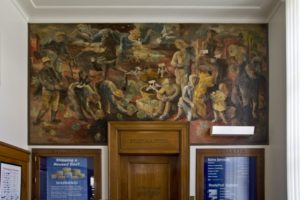
Josephus Antonius Hubertus Franciscus (Joep) Nicolas (Roermond Netherlands, 6 October 1897 – Steyl, Netherlands 25 July 1972 ) was a Dutch glazier , painter and draftsman . He is considered an innovator in glass painting in the 20th century. With Charles Eyck and Henri Jonas he was a pioneer of the Limburg School. From 1939 to 1958, Nicolas lived in the United States , where he made windows for 22 churches. The work of Joep Nicolas is expressive, expressionistic and colorful. Christian symbolism plays a major role. Some of his works are abstract. In America, his work becomes more businesslike and less romantic.
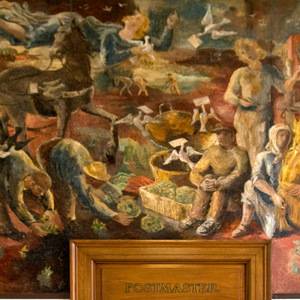
ARCHITECTURAL CLASSIFICATION
Complete this item for properties having architectural or historical importance. Select one or more subcategoryto describe the property’s architectural styles or stylistic influences from the list, Data Categories for Architectural Classification, below. Enter one subcategory in each blank on the form, placing those most important to the property first.
GUIDELINES FOR ARCHITECTURAL CLASSIFICATION
If none of the subcategories describes the property’s style or stylistic influence, enter:
1.the category relating to the general period of time, and
2.if possible, enter in the next blank “other:” and the term (not exceeding 28 characters) commonly used to describe the style or stylistic influence.
Late 19th and 20th Century Revivals
Other: Chateauesque
(Enter the general category by itself if no specific style or stylistic influence is apparent but the general characteristics of the period are present.)
For properties not described by any of the listed terms– including bridges, ships, locomotives, and buildings and structures that are prehistoric, folk, or vernacular in character, enter “other:”with the descriptive term (not exceeding 28 characters) most commonly used to classify the property by type, period, method of construction, or other characteristics. Use standardized terminology, terms recommended by the SHPOs, or a regionally-based system of nomenclature wherever possible. Do not use function, such as “worker housing” and “industrial,” unless it actually describes a design or construction type. Define all terms in the narrative for section 7. Do not enter “vernacular” because the term does not describe any specific characteristics.
Other: Pratt through truss
Other: Gloucester fishing schooner
Other: I-house
Other: split-log cabin
Other: Chaco Canyon
For buildings and structures not described by the listed terms or by “other” and a common term, enter “No style.”
Data Categories for Architectural Classification
(there are more entries on this list but I have only included the ones that arerelevant here)
Category Subcategories Other Stylistic Terminology
MODERN
MOVEMENT New Formalism; Neo-Expressionism;
Brutalism; California Style or
Ranch Style; Post-Modern; Wrightian
Moderne Modernistic; Streamlined Moderne; Art Moderne
International Style Miesian
Art Deco
OTHER
MATERIALS
Enter one or more terms from the list, Data Categories for Materials,to describe the principal exterior materials of the property. Enter both historic and nonhistoric materials.
Enter one category or subcategory in each blank for “foundation,” “walls, “and “roof.” Under “other,” enter the principal materials of other parts of the exterior, such as chimneys, porches, lintels, cornices, and decorative elements. Use a continuation sheet for additional entries, making sure to list them under the headings: “foundation,” “walls,” “roof,” or “other.”
Enter only materials visible from the exteriorof a building, structure, or object. Do not enter materials of interior, structural, or concealed architectural features even if they are significant.
DATA CATEGORIES FOR MATERIALS
EARTH
WOOD
Weatherboard; Shingle; Log; Plywood/particle board; Shake
BRICK
STONE
Granite; Sandstone (including brownstone); Limestone; Marble; Slate
METAL
Iron; Copper; Bronze; Tin; Aluminum; Steel; Lead; Nickel; Cast iron
STUCCO
TERRA COTTA
ASPHALT
ASBESTOS
CONCRETE
ADOBE
CERAMIC TILE
GLASS
CLOTH/CANVAS
SYNTHETICS
Fiberglass; Vinyl; Rubber; Plastic
OTHER
The following publications may be helpful:
Ohio’s Downtown Redevelopment Districts and Historic Preservation Development Webinar
Wednesday, December 19th 1:00 pm – 2:00 pm
Developing certified historic structures can be a complicated and complex task. Ohio’s Downtown Redevelopment District program is a critical tool to redevelop these important historic structures. Downtown Redevelopment Districts work like Tax Increment Financing in that they capture new growth in property taxes in a defined 10 acre district continuous to a certified historic structure. Unlike a TIF that is generally restricted to public infrastructure improvements, a Downtown Redevelopment District can be used to redevelop the historic building, build innovation districts to grow high-tech companies, build public infrastructure or fund local economic development groups associated with the projects. Learn from the experts at Montrose Development Advisors, including David Robinson and Nate Green, as well as from Rodd Hale, Village Administrator of Versailles, Ohio, who implemented multiple Downtown Redevelopment Districts to better understand how this important historic preservation program works at the Heritage Ohio webinar series on December 19, 2018 at 1pm.
 David J. Robinson has 25 years of economic development experience and provides economic development planning and corporate site location consulting services. Mr. Robinson is the Principal of Montrose Development Advisors, author of two economic development textbooks and served as a lawyer, Member of the Ohio House of Representatives, Ameritech Ohio, Columbus Mayor Greg Lashutka and the Ohio Chamber of Commerce. Mr. Robinson is a graduate of Bowling Green State University, the Ohio State University law school, and has an Advanced Management Certificate from Ohio State University’s Fisher College of Business.
David J. Robinson has 25 years of economic development experience and provides economic development planning and corporate site location consulting services. Mr. Robinson is the Principal of Montrose Development Advisors, author of two economic development textbooks and served as a lawyer, Member of the Ohio House of Representatives, Ameritech Ohio, Columbus Mayor Greg Lashutka and the Ohio Chamber of Commerce. Mr. Robinson is a graduate of Bowling Green State University, the Ohio State University law school, and has an Advanced Management Certificate from Ohio State University’s Fisher College of Business.
 Nate Green has over 19 years of economic development experience and provides economic development strategic planning, corporate site location and financial advisory services to communities, companies, developers, and port authorities. Nate is Director of Economic Development for Montrose Development Advisors, LLC and served an executive for Piper Jaffray, JobsOhio, Ohio Department of Development, Pickaway Progress Partnership, and the Cleveland-Cuyahoga County Port Authority. Mr. Green is a graduate of Bowling Green State University and with an MBA from Ohio University.
Nate Green has over 19 years of economic development experience and provides economic development strategic planning, corporate site location and financial advisory services to communities, companies, developers, and port authorities. Nate is Director of Economic Development for Montrose Development Advisors, LLC and served an executive for Piper Jaffray, JobsOhio, Ohio Department of Development, Pickaway Progress Partnership, and the Cleveland-Cuyahoga County Port Authority. Mr. Green is a graduate of Bowling Green State University and with an MBA from Ohio University.
 Rodd Hale is an Ohio local government leader. Rodd currently serves as the Village Administrator for Versailles, Ohio. Rodd has served in his current position for six years and prior to that worked as the Public Safety and Service Director for the city of Greenville, Ohio. On behalf of Versailles, Ohio, Mr. Hale served as the point of contact for the development of multiple Downtown Redevelopment Districts. Mr. Hale is a graduate of Bluffton College and has his Masters’ Degree in Business Administration from Bowling Green State University.
Rodd Hale is an Ohio local government leader. Rodd currently serves as the Village Administrator for Versailles, Ohio. Rodd has served in his current position for six years and prior to that worked as the Public Safety and Service Director for the city of Greenville, Ohio. On behalf of Versailles, Ohio, Mr. Hale served as the point of contact for the development of multiple Downtown Redevelopment Districts. Mr. Hale is a graduate of Bluffton College and has his Masters’ Degree in Business Administration from Bowling Green State University.
This webinar is a benefit of Heritage Ohio membership, to become a member click HERE
To register for the webinar click HERE
After registering, you will receive a confirmation email containing information about joining the webinar.
Funding for Historic Preservation Projects Webinar
Wednesday, November 28th 1:00 pm – 2:00 pm
Join Heritage Ohio’s Joyce Barrett for a review of over two dozen funding sources for historic preservation for historic buildings, on November 28, 1pm-2pm.
Some funding sources are meant for commercial properties, some for public projects, and even a few can be used for personal homes. Some are big, some are small, you might find a program that fits your needs. Learn about grants, loans, and credits that can serve historic buildings.
This webinar is a benefit of Heritage Ohio membership, to become a member click HERE
To register for the webinar click HERE
National Register of Historic Places Registration Form – Question 6
This question is relatively straightforward for a post office.
- Enter the most specific category and subcategory.
6. Function or Use
Historic Functions
(Enter categories from instructions.)
_______Government (Post Office)____________
____________________________________
Current Functions
(Enter categories from instructions.)
______Government (Post Office)_____________
____________________________________
HISTORIC AND CURRENT FUNCTIONS
Data Categories for Functions and Uses
the Government section is the only one that applies to us:
| GOVERNMENT | capital | statehouse, assembly building |
|
city hall
|
city hall, town hall | |
| correctional facility | police station, jail, prison | |
|
fire station
|
firehouse | |
|
government office
|
municipal building | |
| diplomatic building | embassy, consulate | |
| custom house | custom house | |
| post office | post office | |
| public works | electric generating plant, sewer system | |
| courthouse | county courthouse, Federal courthouse |
National Register of Historic Places Registration Form – Question 5
5. Classification
How to complete the National Register of Historic Places states:
5. CLASSIFICATION
OWNERSHIP OF PROPERTY
Mark “x” in all boxes that apply to indicate ownership
Private: Property owned by an individual, group of people, or organized body such as a church, corporation, or Indian tribe.
Public-local: Property owned by a local government such as a municipality or county.
Public-State: Property owned by the State government.
Public-Federal: Property owned by the U.S. government. – this is the one that applies to us
CATEGORY OF PROPERTY
Mark “x” in the box for the kind of property being documented: building, district, site, structure, or object. Mark only one box. See National Register Property and Resource Types for definitions and examples.
NATIONAL REGISTER PROPERTY AND RESOURCE TYPES
| Type | Definition | Examples |
| BUILDING | A building, such as a house, barn, church, hotel, or similar construction, is created principally to shelter any form of human activity. “Building” may also be used to refer to a historically and functionally related unit, such as a courthouse and jail or a house and barn. |
houses, barns, stables, sheds, garages, courthouses, city halls, social halls, commercial buildings, libraries, factories, mills, train depots, stationary mobile homes, hotels, theaters, schools, stores, and churches. |
DETERMINING CONTRIBUTING AND NONCONTRIBUTING RESOURCES
The physical characteristics and historic significance of the overall property provide the basis for evaluating component resources. Relate information about each resource, such as date, function, associations, information potential, and physical characteristics, to the significance of the overall property to determine whether or not the resource contributes.
A contributing building, site, structure, or object adds to the historic associations, historic architectural qualities, or archeological values for which a property is significant because:
- it was present during the period of significance, relates to the documented significance of the property, and possesses historic integrity or is capable of yielding important information about the period. – this applies to the post office itself
A noncontributing building, site, structure, or object does not add to the historic associations, historic architectural qualities, or archeological values for which a property is significant because:
- it was not present during the period of significance, or does not relate to the documented significance of the property – this applies to the extension built at the back of the post office during the 1970’s
National Register of Historic Places Registration Form – Question 4
Question 4 is also not to be completed because it doesn’t apply to Post Offices.
4. National Park Service Certification
I hereby certify that this property is:
entered in the National Register
determined eligible for the National Register
determined not eligible for the National Register
removed from the National Register
other (explain:) _____________________________________________
Signature of the Keeper Date of Action




